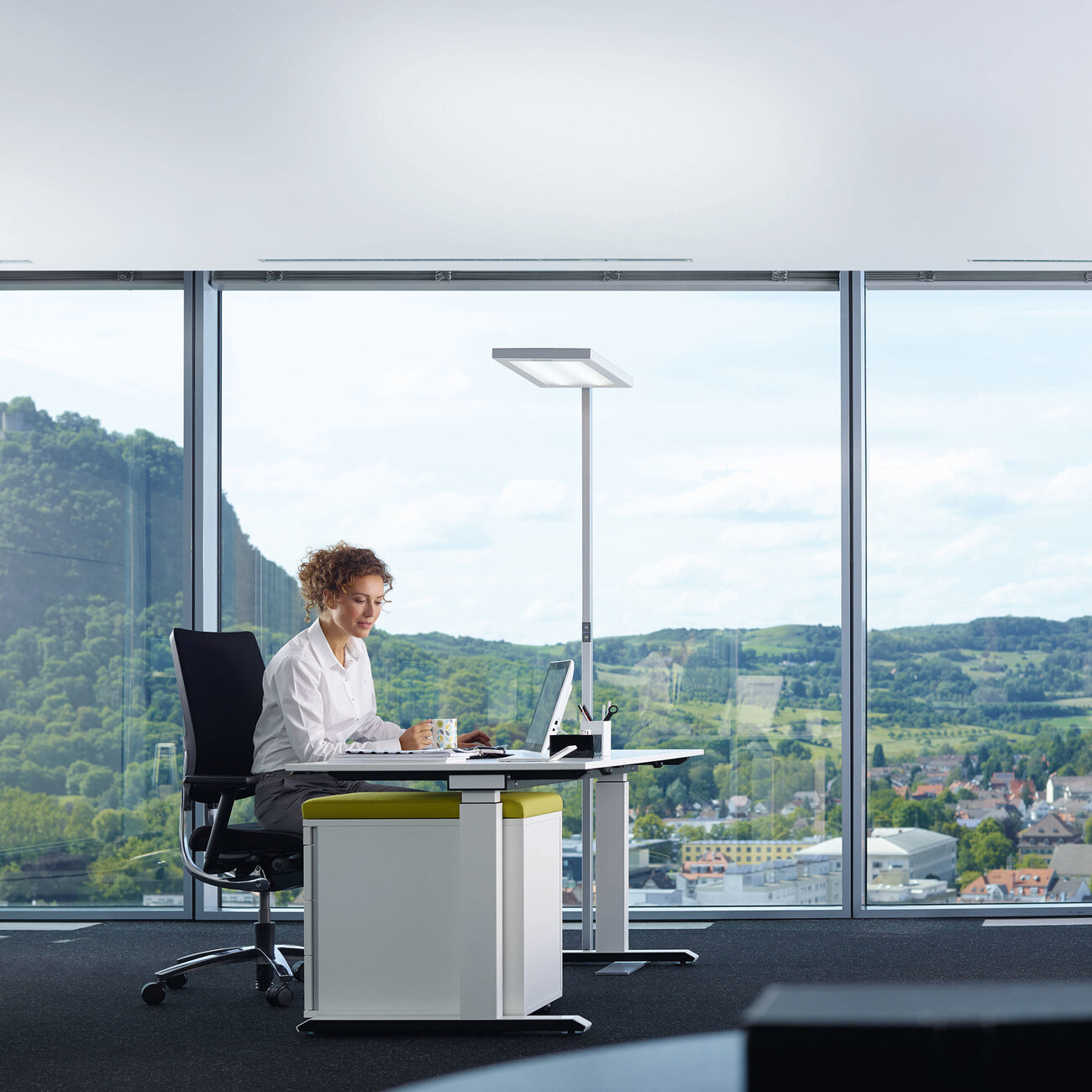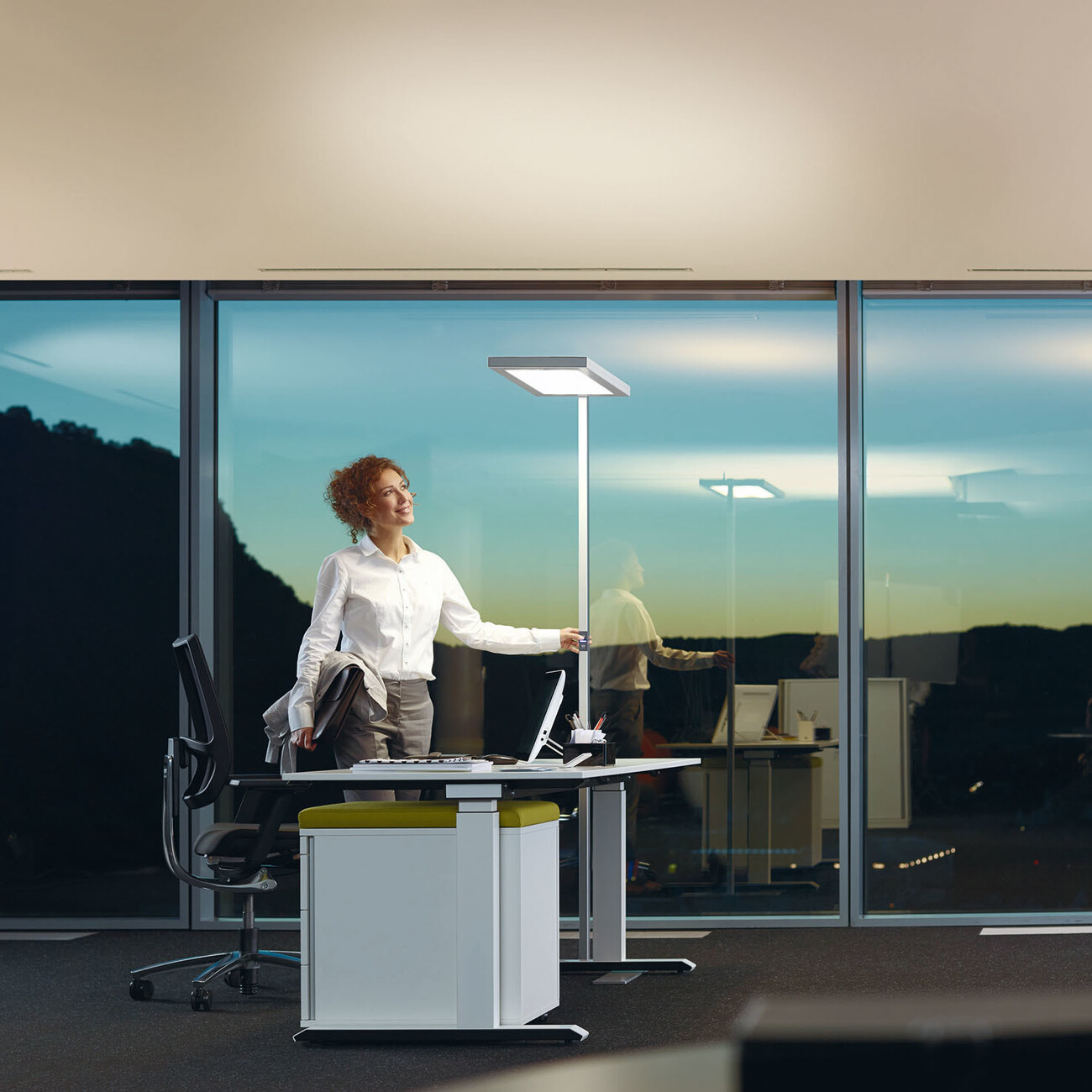A good night’s sleep begins in the office
Sleep disturbance has become something of an epidemic. While it previously affected mainly those in certain professions, such as shift workers whose bodies have to continually adjust to a new day-and-night rhythm, the phenomenon has now extended to all areas of the population. Now, at least, there’s one thing we know: Light plays a crucial role in our ability to sleep. Of course, that means much more than simply rolling the blinds down in the evenings and turning off the bedside lamp. Whether or not we get a good night’s sleep is actually decided many hours earlier.
For around two decades now, scientists have known that so-called retinal ganglion cells are essentially responsible for the effect light has on people. They determine the release of the hormones melatonin, cortisol and serotonin. While cortisol boosts performance in the mornings, melatonin has the opposite effect in the evening: It reduces activity and promotes a feeling of tiredness. The body desperately needs these recovery phases, because it’s at these times that it releases growth hormones that can repair damaged cells.
It is ultimately serotonin that is responsible for top performance in the daily cycle. It also has a mood-enhancing, motivating effect. If the body makes too little serotonin, this may even lead to depressive disorders.
Light is essentially responsible for the body producing these three hormones in sufficient quantities. Insufficient light leads to a shortage of melatonin, which results in sleeplessness during the night and lower performance during the day. It is precisely to counter these light deficiencies and to promote health and performance in the workplace that Waldmann developed “Pulse VTL”: The light management system uses the lights connected to it to furnish workplaces with precisely the light composition to optimally support physical wellbeing over the course of the day. During the morning, cold-tone light up to 6500 kelvin and high light intensity promote the activation of the body and the production of the hormone cortisol. Around midday the blue proportion of the light falls slightly. In the afternoon cold and warm light are increasingly combined, with light strength already having been slightly reduced. Towards the evening “Pulse VTL” continually reduces light strength and ensures an ever warmer light tone so that the body can begin to release melatonin.
Light is essentially responsible for the body producing these three hormones in sufficient quantities. Insufficient light leads to a shortage of melatonin, which results in sleeplessness during the night and lower performance during the day. It is precisely to counter these light deficiencies and to promote health and performance in the workplace that Waldmann developed “Pulse VTL”: The light management system uses the lights connected to it to furnish workplaces with precisely the light composition to optimally support physical wellbeing over the course of the day. During the morning, cold-tone light up to 6500 kelvin and high light intensity promote the activation of the body and the production of the hormone cortisol. Around midday the blue proportion of the light falls slightly. In the afternoon cold and warm light are increasingly combined, with light strength already having been slightly reduced. Towards the evening “Pulse VTL” continually reduces light strength and ensures an ever warmer light tone so that the body can begin to release melatonin.













